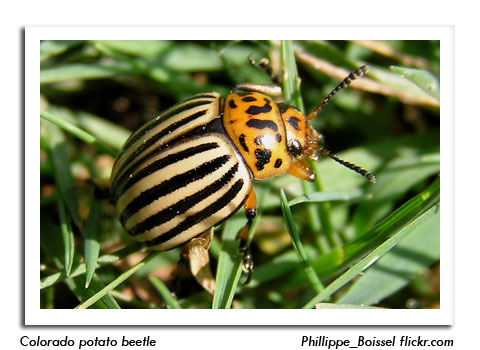
 |
|
|
Vegetables
Volume 56 Number 16 Date 08/11/2011 CABBAGE LOOPER - Larvae produced by migrants that arrived last month are in the late instars and their defoliation should be evident in home gardens and commercial cabbage plantings. Scouting on a weekly basis through late August or early September is recommended. A 10% infestation threshold should be used from early heading until harvest to protect the market quality of cabbage. The same threshold applies to broccoli and cauliflower once flowers or curds begin to develop. COLORADO POTATO BEETLE - Emergence of second generation beetles has begun in portions of northern Wisconsin. In the southern and central areas, larval development continued. Late-season control may be warranted if defoliation exceeds 30% during tuber formation. Treatments should be applied when most of the population is in the intermediate third instar stage, presuming this does not conflict with label recommendations or resistance management. Proper timing permits most eggs to hatch, but kills the larvae before they reach the destructive fourth instar stage. Potato producers are reminded to avoid consecutive use of a single insecticide product or use of multiple products with similar modes of action. CUCURBIT DOWNY MILDEW - This disease was confirmed on cantaloupe and watermelon in Dane County last week, representing the second reported case in Dane County this season. According to the IPMpipe website at http://cdm.ipmpipe.org , there is a high risk of disease development in cucurbits near the infection sources and a minimal risk to cucurbits most other areas. --Krista Hamilton & Clarissa Hammond, DATCP Pest Survey 


|
|
|